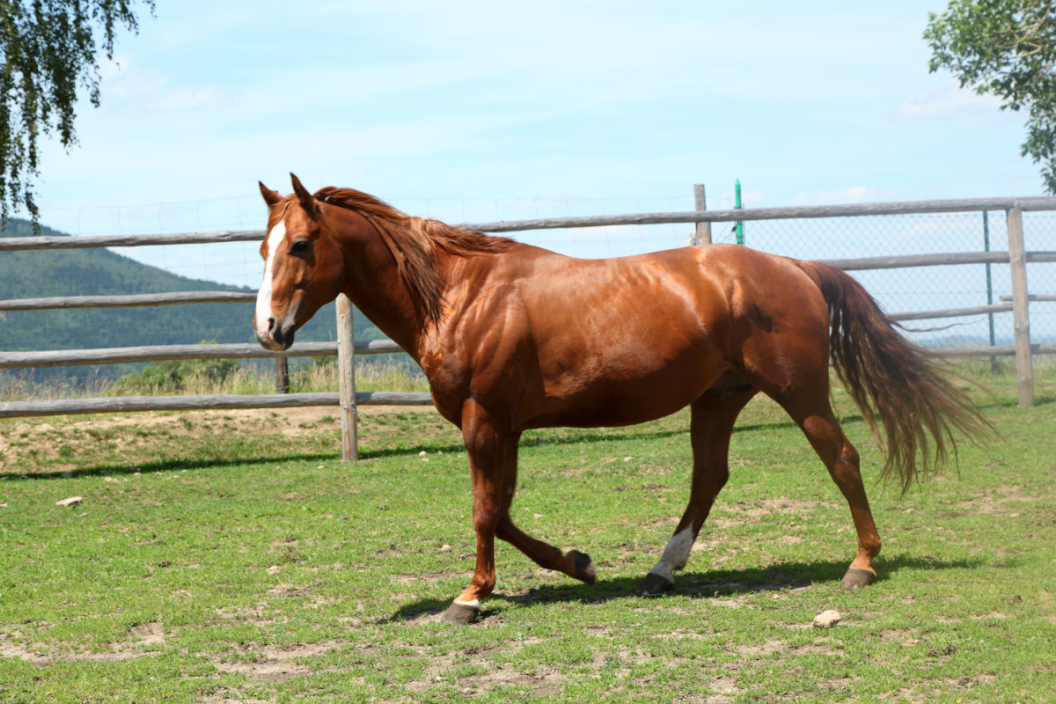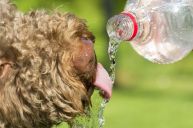If you've ever ridden a horse hard and noticed that they're panting heavily for a little too long after the exertion, you might be dealing with anhidrosis. This is especially true if the horse has a dry coat. Horses with anhidrosis will attempt to cool themselves off by panting, which is why this disease is also referred to as 'puff disease.'
Anhidrosis is also known as 'non-sweating disease,' as horses affected will cease sweating. In terms of linguistics, the 'an-' stands for without, '-hidro-' means of or pertaining to sweat or the sweat glands, and '-sis' is the state or condition. This is of course, a very big deal in hot climates. Unfortunately, it's also most likely to occur in hot climates as well.

Anhidrosis occurs most often in areas that experience prolonged periods of heat and high humidity like in Gulf Coast states. It occurs most often in horses living in tropical and subtropical climates with Florida leading with the most cases in the United States. Horses in temperate climates rarely suffer from the condition. Anhidrosis is an idiopathic disease (its cause is unknown), and its onset can occur suddenly.
It is believed that the condition occurs when a horse's sweat glands become over-stimulated, and as a result of the stress, malfunction. The consequence is a horse that sweats very little, if at all. This is dangerous, as sweating helps a normal horse cool its muscles and internal organs. A horse that cannot sweat runs the risk of developing heat stroke as it cannot regulate its body heat.
A horse owner unaware of his or her horse's anhidrosis might first notice that the horse's performance suffers when it's hot out, and that the horse's respiration rate remains elevated long after work ceases. Aside from poor performance in hot weather, abnormally elevated respiration post-work, and an elevated body temperature, other clinical signs of the disease include flaky dandruff and hair loss. A thin, or thinning, coat is sometimes an early indicator of the disease. In addition, a horse with anhidrosis might exhibit distress or lethargy when the weather is hot and humid, even if that horse is not working.

If a horse has been diagnosed with anhidrosis, there are several ways to control the condition. Anhidrotic horses should be kept as cool as possible when heat and humidity peak. Cool mist, frequent sponging, air-conditioned stalls, fans, shade, and stall rest are all ways to keep an affected horse cool and comfortable. Horses with anhidrosis should not be ridden or worked during the hottest part of the day. Morning or evening work sessions are preferable, as temperatures are generally cooler. Finally, moving an affected horse to a cooler climate and out of humid weather is one of the best ways to keep the disease under control.
Some horse owners also turn to supplements for help in controlling the condition. If your horse has been diagnosed with anhidrosis and you're interested in exploring the use of supplements, have your veterinarian take and analyze a blood sample. This will help you determine which supplement will be best for your horse. Keep in mind that a supplement is exactly that - a supplement - and must be combined with other measures (changing your riding schedule, for example) in order to be maximally effective.
Sadly, although a horse that is only lightly ridden can likely cope with the disease without too much trouble, a diagnosis of anhidrosis in a performance or sport horse can potentially spell the end of a career.
Do you have horses and live in a humid climate? Do you have experience with anhidrosis? Tell us on the Wide Open Pets Facebook page!
This article was originally published March 7, 2018.
READ MORE: Why Horses Need Horseshoes, Plus a Brief History of Shoeing




